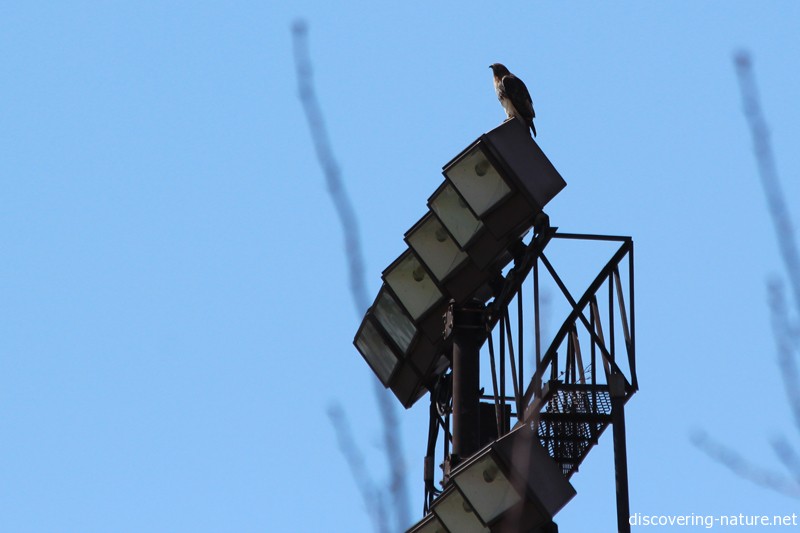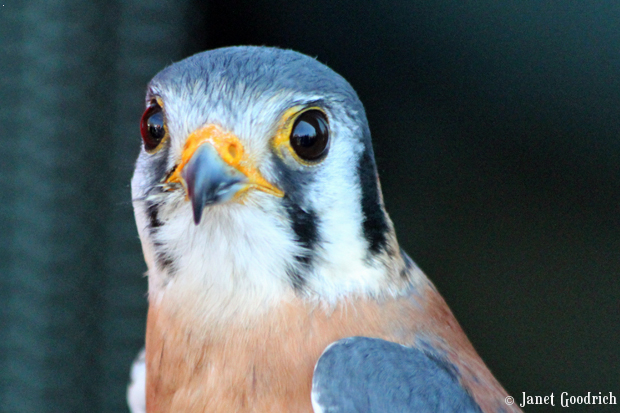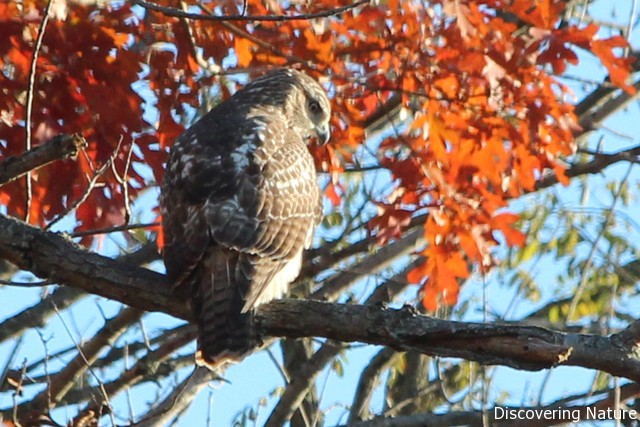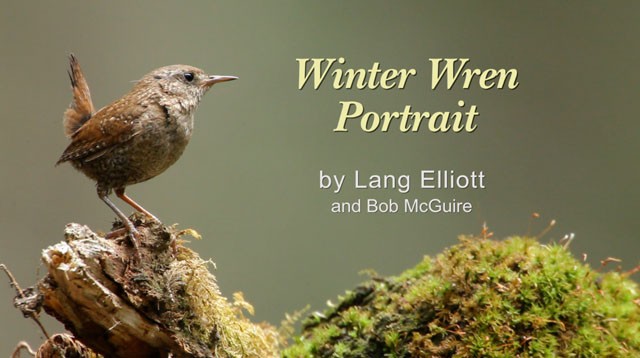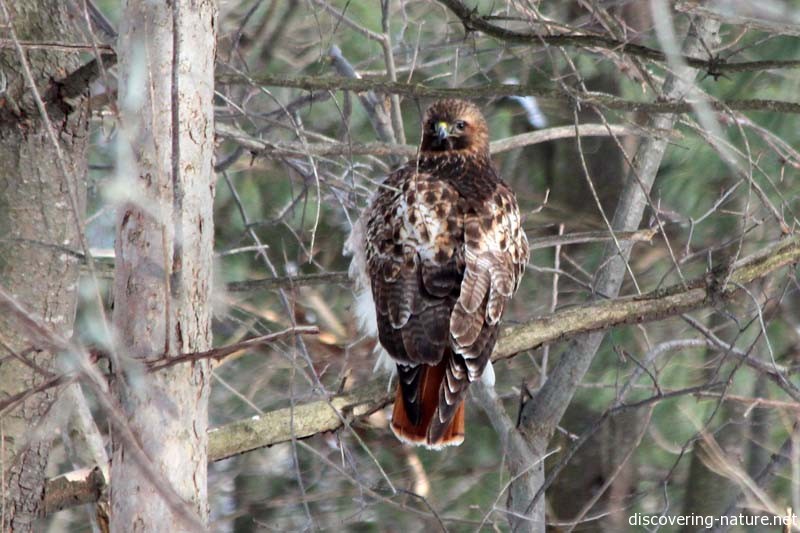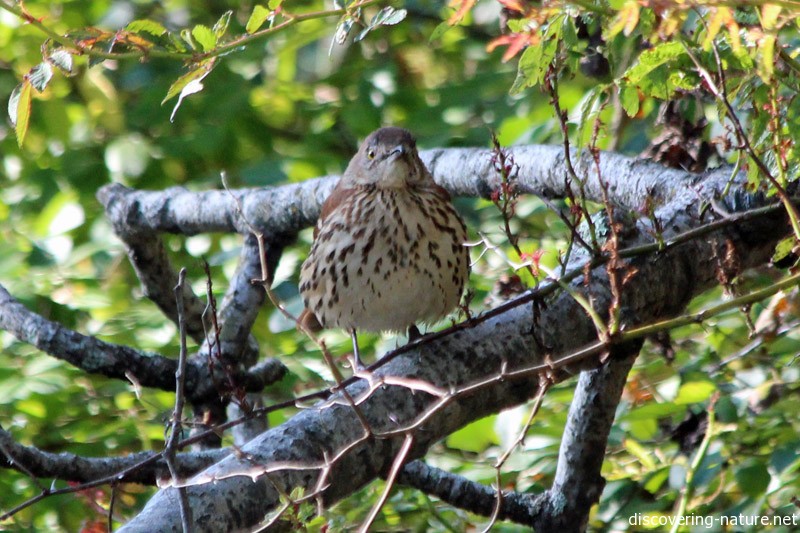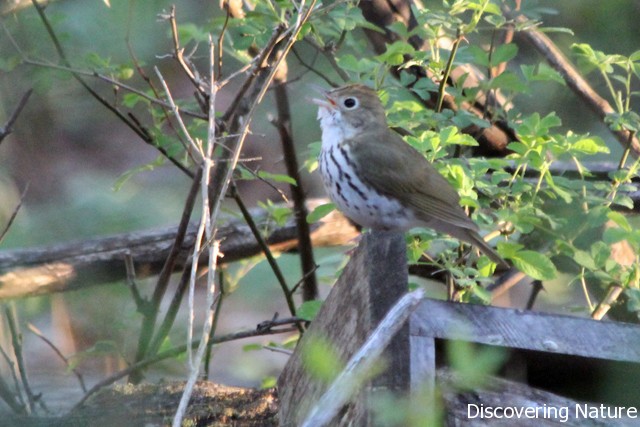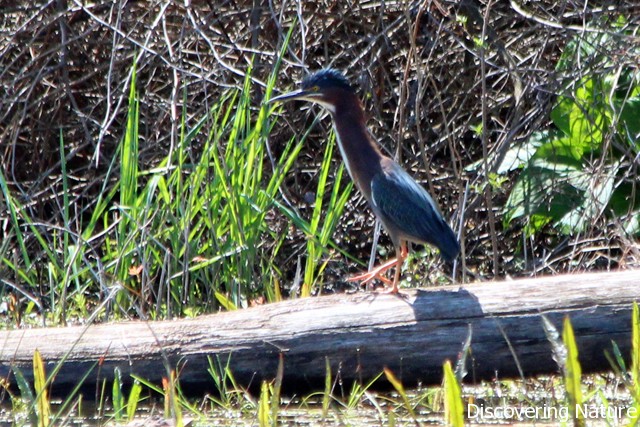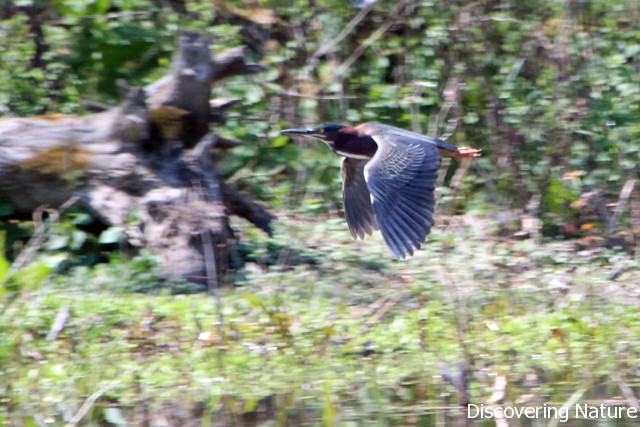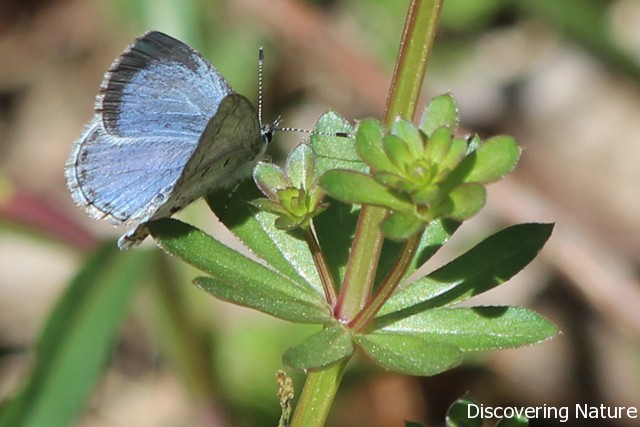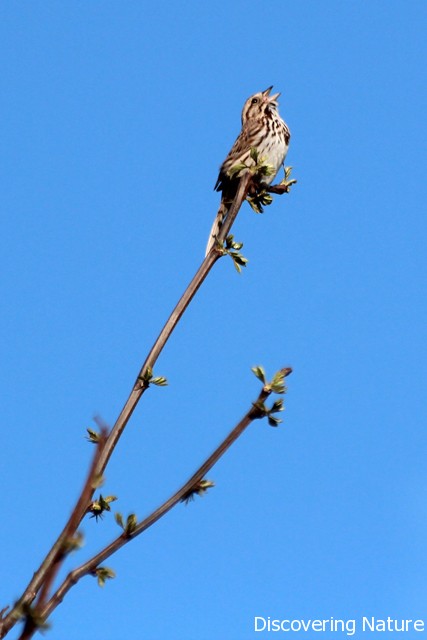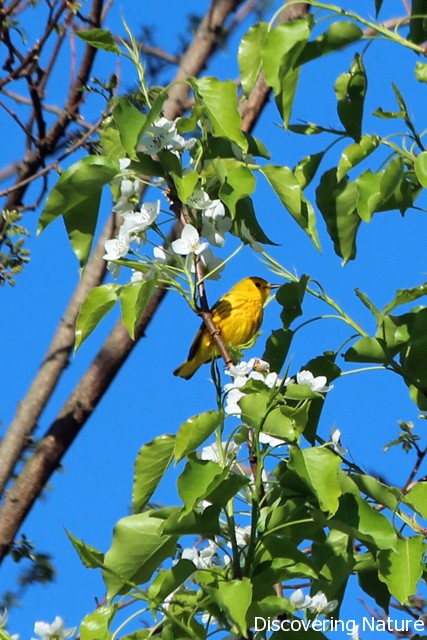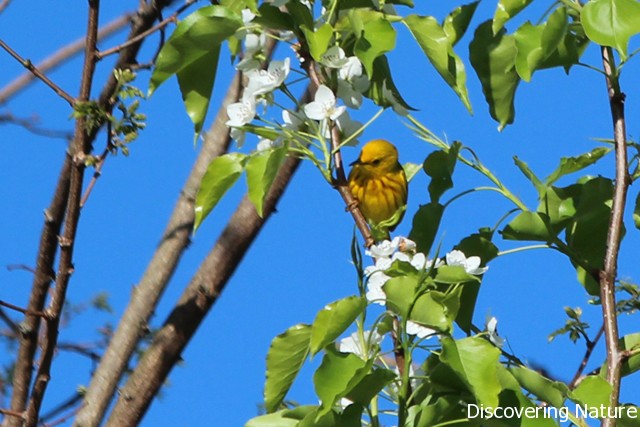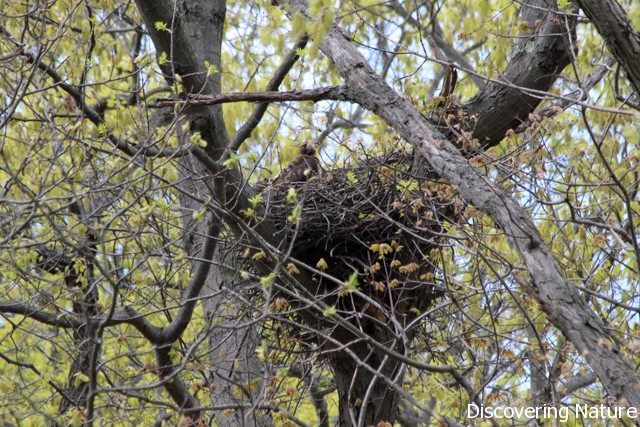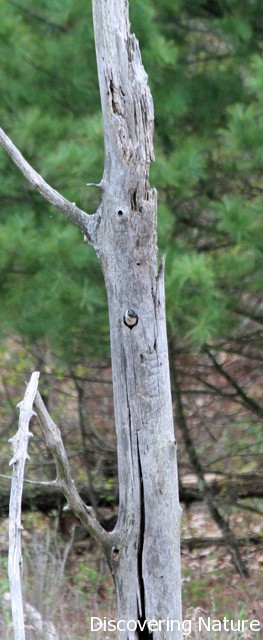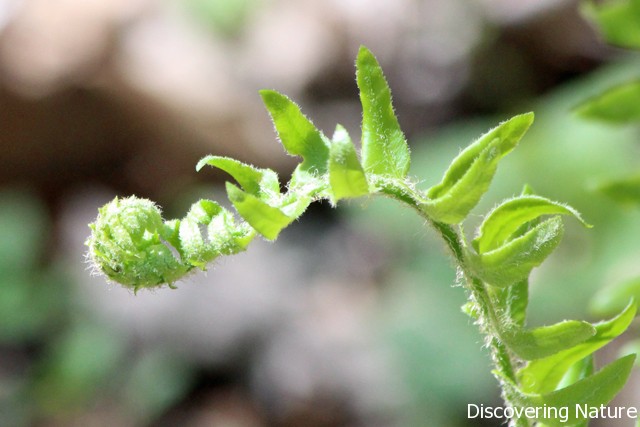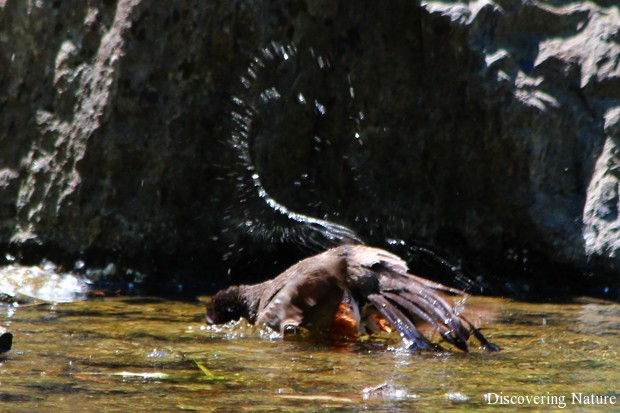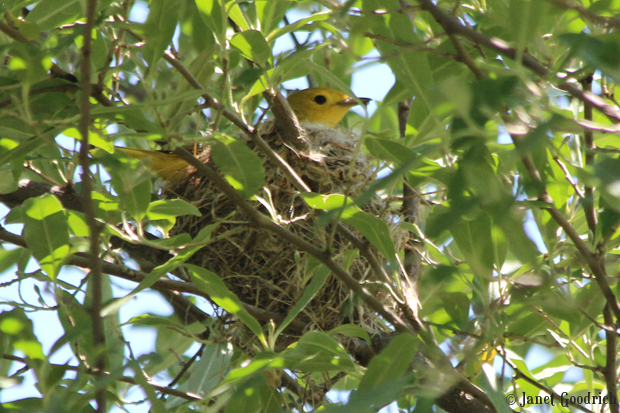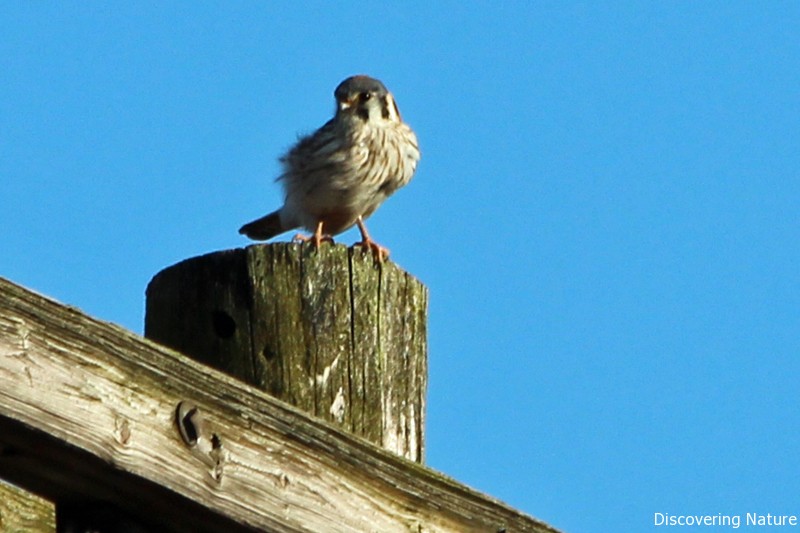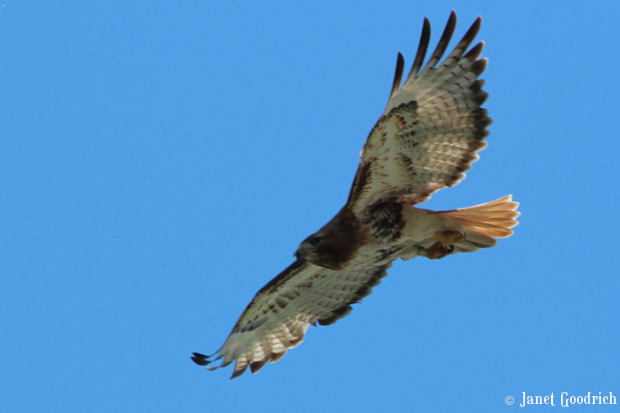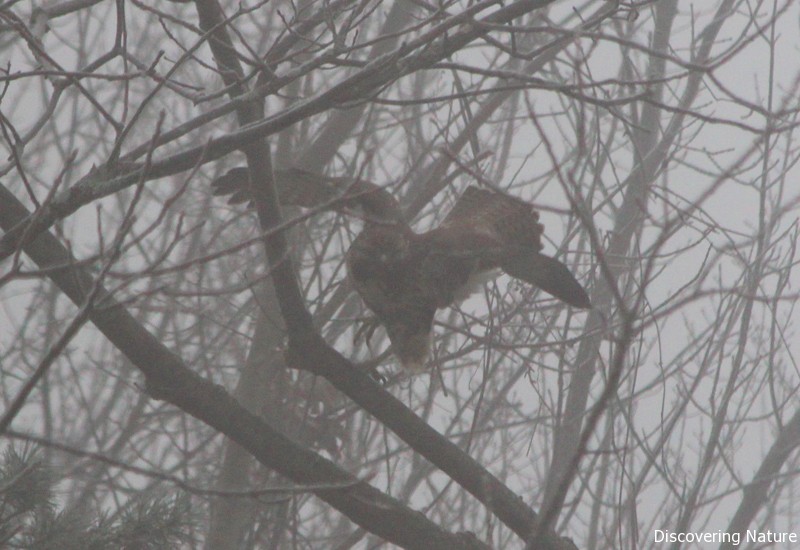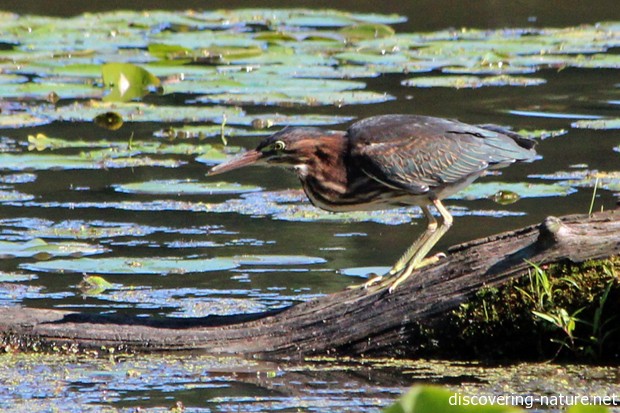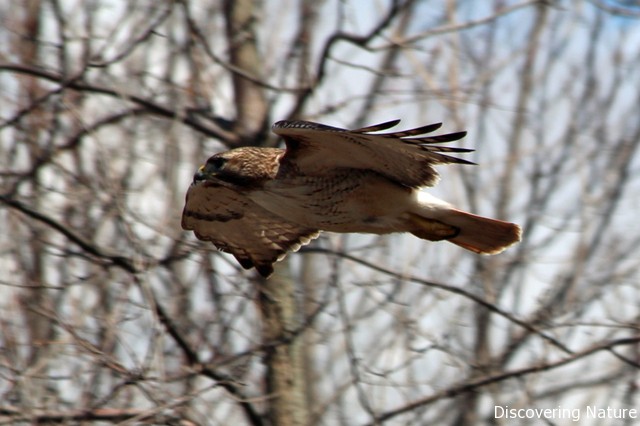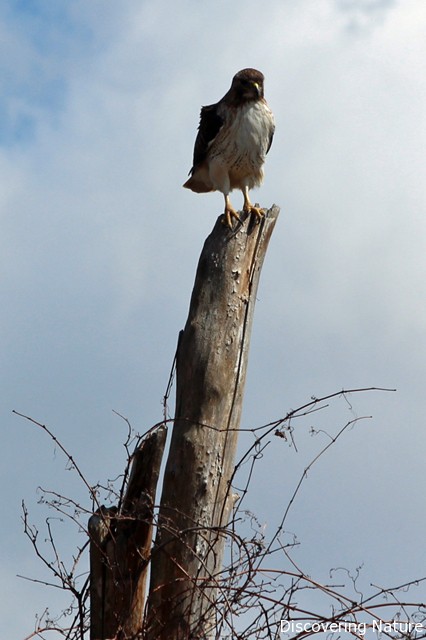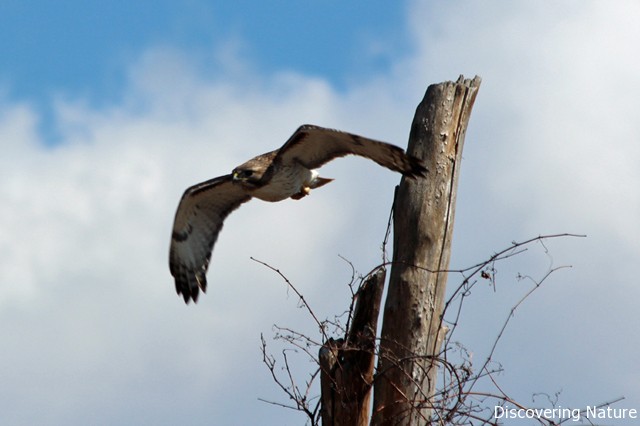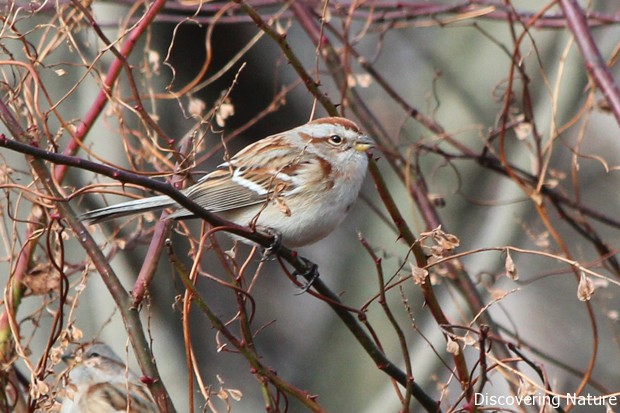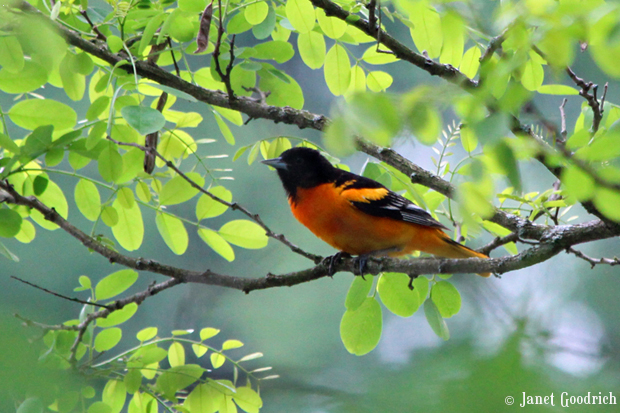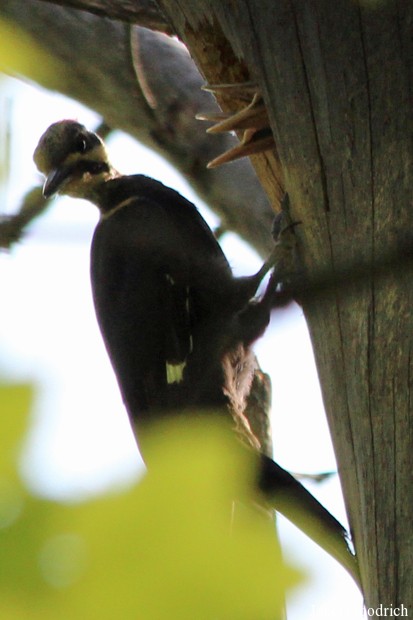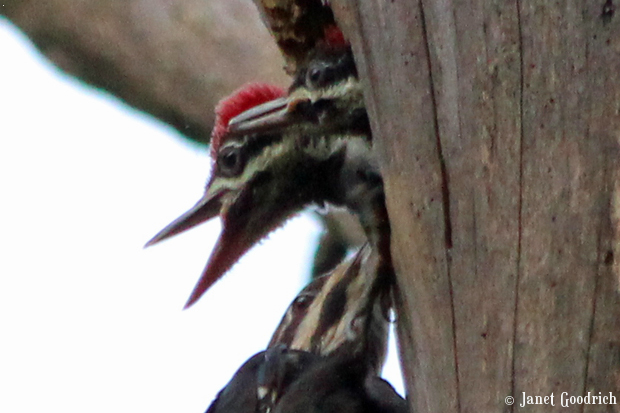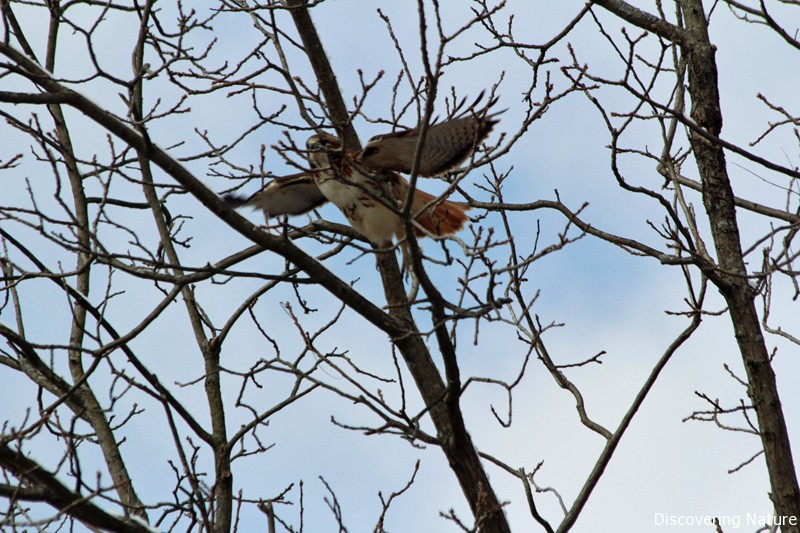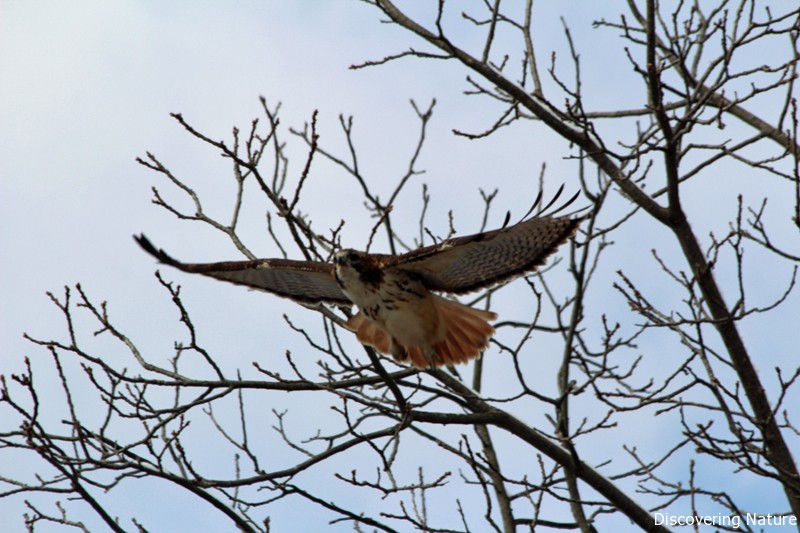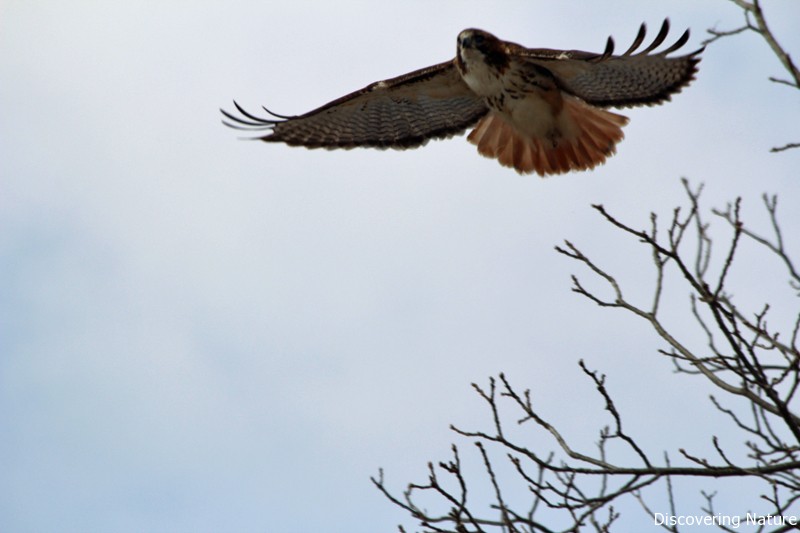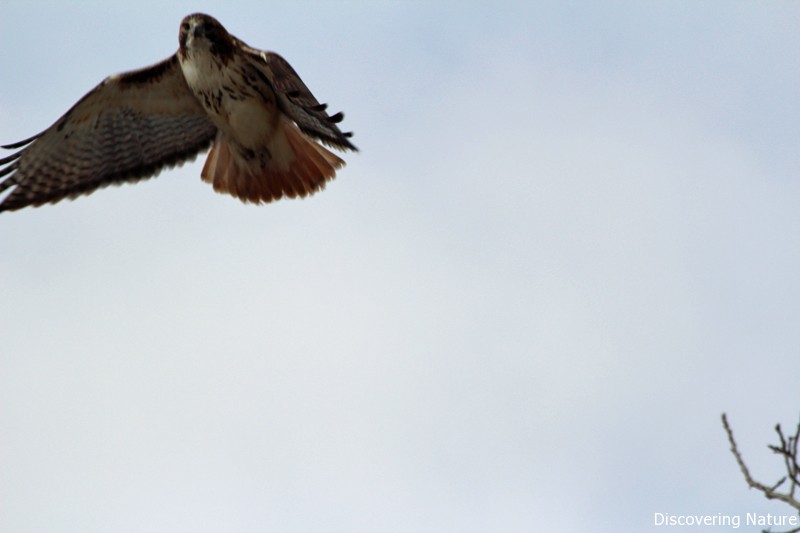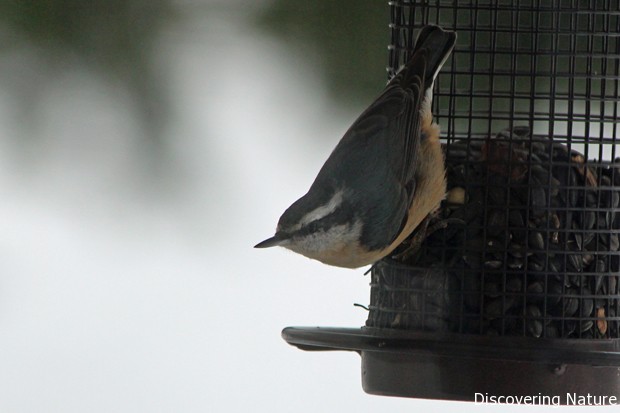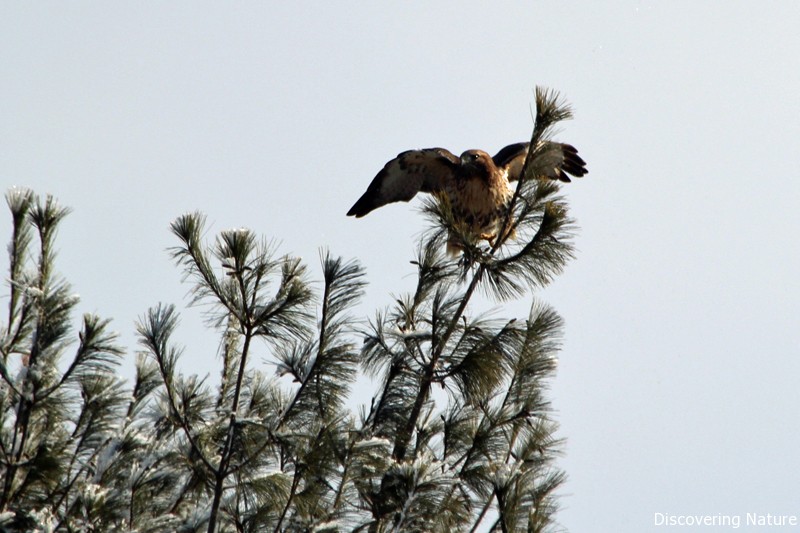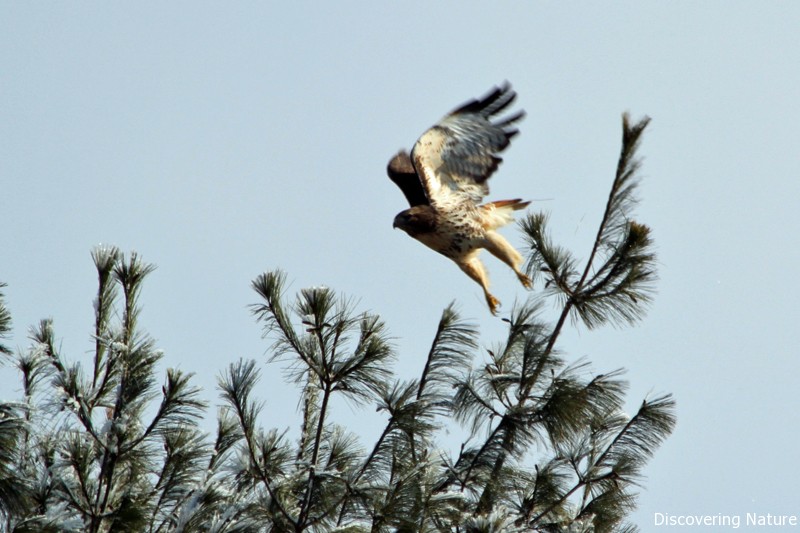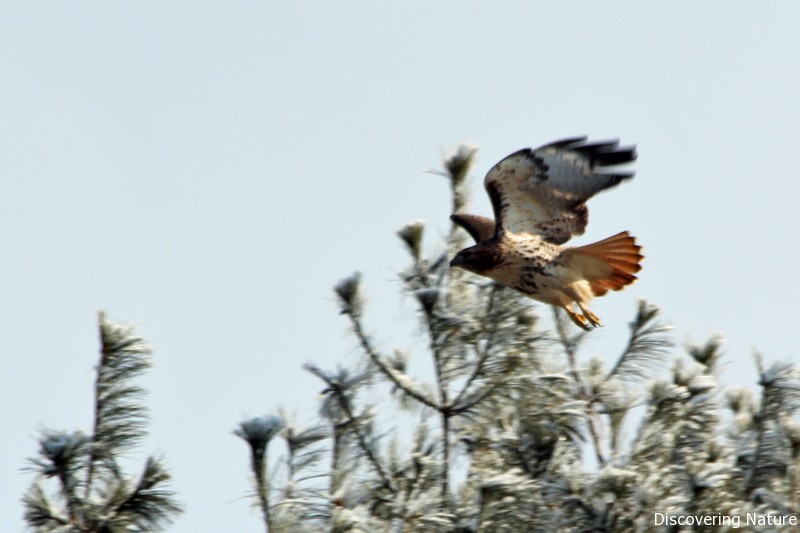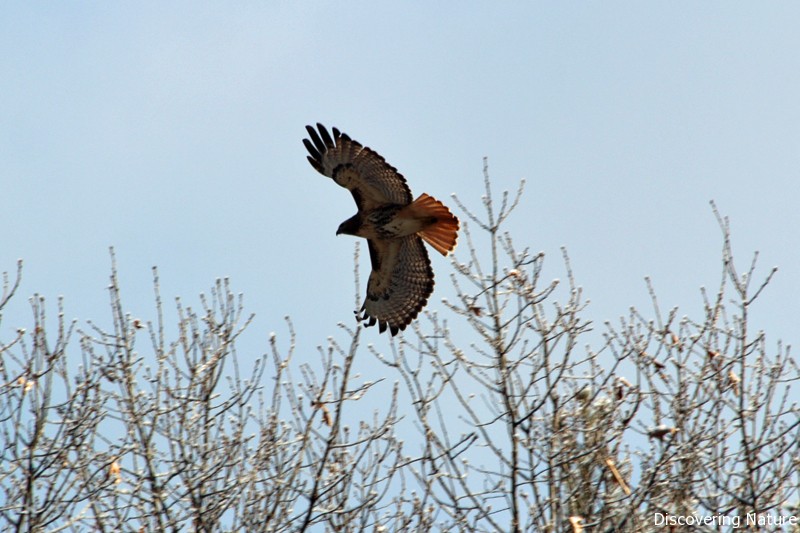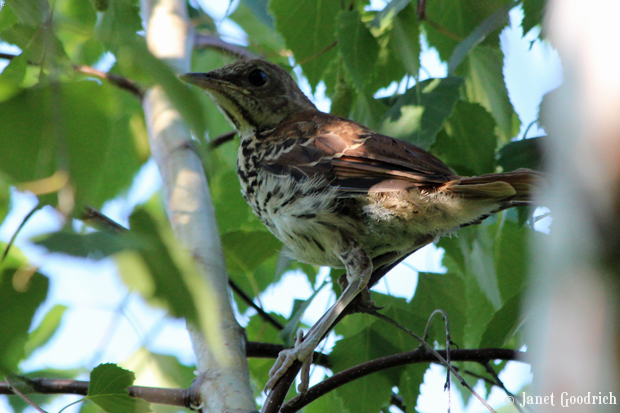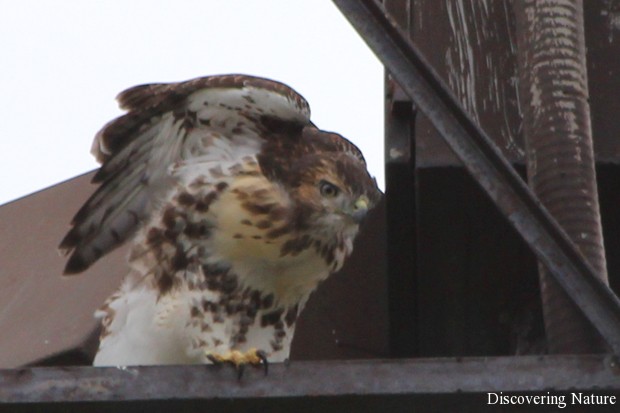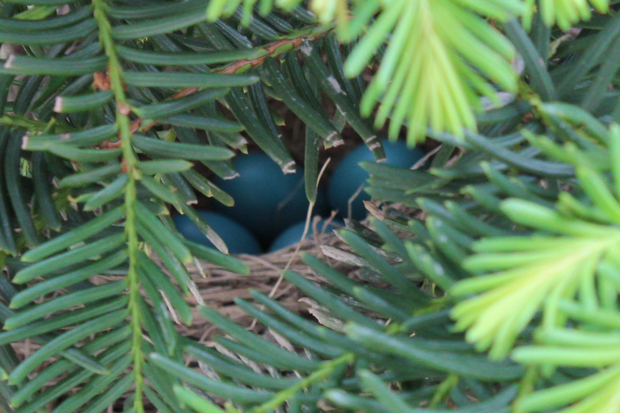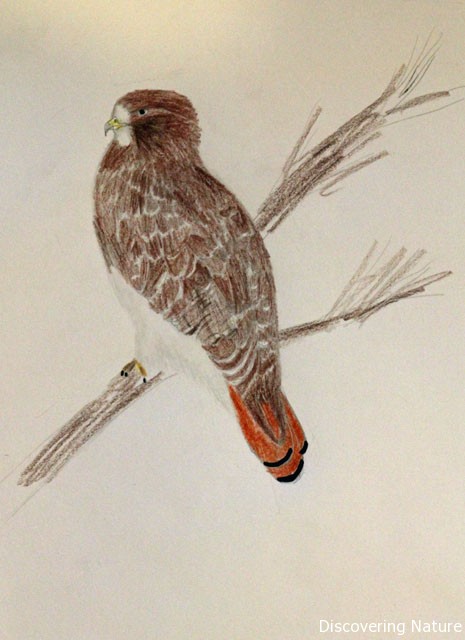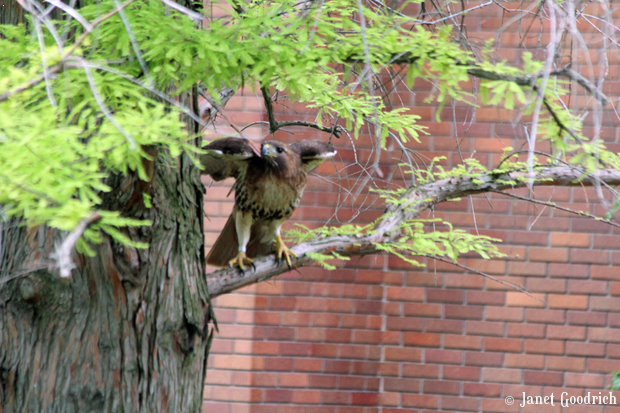-
Big Red
We were in Ithaca on Saturday, so we stopped by the site of the the Cornell hawks’ nest for awhile. This is Big Red on a light post next to the one where her nest is. The nest itself is in a difficult spot to observe — at least, compared to the one they used the year before last. I visited a few times last year but didn’t take many pictures. Luckily lots of other folks did, though.
-
Patience
It’s been a long, very cold winter this year. Since my last post here, I’ve said goodbye to our dear 14-year-old border collie, had foot surgery that kept me convalescent for weeks, gotten a new puppy, and generally been unable to get out and about with my camera. But things are warming up a bit at last, and I hope to be able to enjoy some of the welcome sights of spring.
I’d like to post some of the few winter photos I have gotten in the last few months. This one is of a redtail that sat behind our neighbor’s shed all afternoon one day back in January. I wondered if it was hurt, but it eventually flew off. My guess is that it was feasting on mice around the shed. I’ve always wondered how long hawks will sit in the same place hunting. The answer, in this case, was hours.
We named her Patience.
-
Celebrating Seeing
My daughters and I watched this pileated woodpecker in our back yard as we were eating lunch the other day. She captivated us for several minutes.
No sooner had she flown away than a rabbit appeared, gathering up mouthfuls of grass and leaf litter and hopping behind some trees to pad her nest. Now we know where to look for baby rabbits.
On the whole, this raised awareness of the creatures living all around us is the biggest plus of nature study. Who needs television if you have a window? Who needs computer games if you have eyes? The interest is simply there; all that’s needed is a very little effort to cultivate awareness.
It’s not always easy to be aware, though. Sometimes it brings sorrow. This year I notice several different areas around where bulldozers have cleared space for some kind of development, and every one of them will have an impact on birds or other creatures that lived in those spaces. Where will they go? And how much more space do humans need to take over, mow down, dig up?
Even something like Habitat for Humanity (which recently produced a house on an empty lot nearby) gives me pause these days. It sounds so positive. And it is positive to give someone an opportunity to help build their own home. But why take up new space to do it? Why not redesign an existing building standing empty? Every city has more than enough houses already, more than enough retail buildings and factory spaces. Why not use and re-use these spaces, rather than relentlessly sprawling outward like some seeping toxic spill?
Oh well… enough of the lament. Suffice it to say that I wish we gave more thought such matters before mowing down the bushes and trees to construct new buildings. Awareness — the ability simply to pay attention to what’s around you, wherever you are — is where an environmental ethic begins. Not legislation or speech-making. Opened eyes.
Speaking of which, I have seen many interesting sights of late that I haven’t recorded here, and what follows will be a long column of wonders.
Starting with an oven bird! I’ve heard these leaf-like thrushes many times calling from the forest floor, but never have I been fortunate enough to actually see one till this past weekend, on an early morning walk.
He was having a territorial squabble with another one nearby. The woods were full of them! Here, he’s standing on the ruin of an old nesting box.
At a nearby pond, we’ve seen the first of the green herons…
We’ve seen geese nesting…
…and geese newly hatched.
As I stood watching, I noticed movement from one grass tussock to the next. Meadow mice were darting like lightning from hole to hole, right out in the marsh. They’re the color of dust, but otherwise they remind me a lot of hamsters.
Water snakes abounded. None of them looked big enough to eat a mouse, but the frogs and wogs must be on the run.
I think this tiny butterfly is a silvery blue. Its wings are only about a centimeter wide. The meadow was studded with them; I also saw one bright orange butterfly too elusive to photograph.
The chipmunks are coming out of hiding — well, they’re awake. Some are still hiding.

Find that chipmunk Others look like woodland mariners sailing deadwood ships.
Happily, my daughter and I saw our first rose-breasted grosbeaks the other morning!
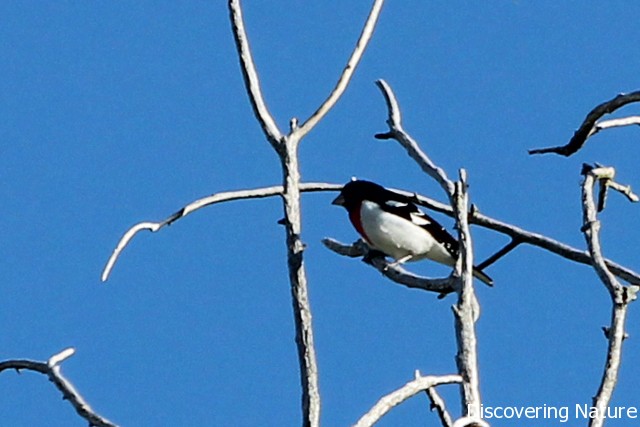
Mr Grosbeak 
Mrs Grosbeak There were other birds chorusing all around, including song sparrows…
…and yellow warblers.
It’s not every day that you get tracked by police while bird watching, but it happened the morning we saw these warblers. My daughter turned around, gasped, and said, “A police car!” We saw an officer circling our parked car and hurried back, fearing we’d broken some parking rule. “Oh, I was going to have her track you,” he greeted us, emerging from behind the car with a large police dog. Turns out he just saw our car and decided to take the opportunity to do some training!
There are several nests we’ve been keeping an eye on. We were thrilled to discover a red-tailed hawk nest in a spot we pass often, but it’s not terribly photographable. Still, as the nestlings grow and begin flappercizing, maybe we’ll get some better views (and pictures).
The other day, we were looking at a red-winged blackbird atop this snag when we noticed a tree swallow in a nest cavity beneath him.
Last but not least, the chickadees must have a few nestlings in this nest box outside our front window, because the parent birds have been active, flying to and fro and apparently feeding young.
It’s a great time of year for being outside. Here in the northeast the sense of release from the grip of winter seems so strong and so welcome.
Even our domestic animals like to get out and smell the flowers!

Whisper -
American Kestrel (Female)
-
Sapsucker Hawk
We’ve seem this redtail before at Sapsucker Woods. It’s a rehabilitated hawk that was released nearby, and it has adopted the pond and its environs as its territory. It’s somewhat tolerant of people, but as I was photographing it another photographer walked up and spooked it — so it’s still got at least some vestige of its wild “boundaries.”
We saw it several more times during the day. Once as it hunted high in a tree, it decided to move on and simply spread its wings. It was a windy day, and the breeze lifted it like a kite so it was soaring in seconds.
How I’d love to be able to do that.
-
Hungry Hawk
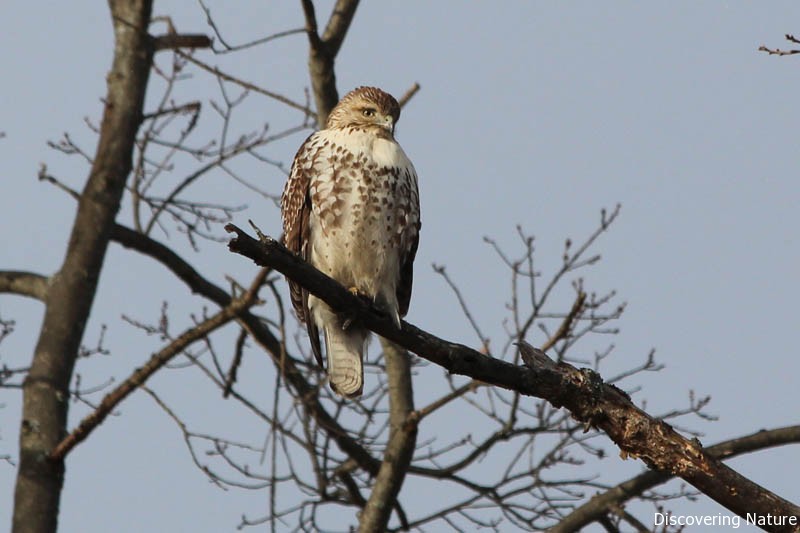 I appreciated that this hawk sat still for me. I love the way the sun hits its breast in this picture.
I appreciated that this hawk sat still for me. I love the way the sun hits its breast in this picture.The others lack the sun but still have the clarity. So what I’ve read is true: not using your zoom lens to its full capacity results in clearer pictures.
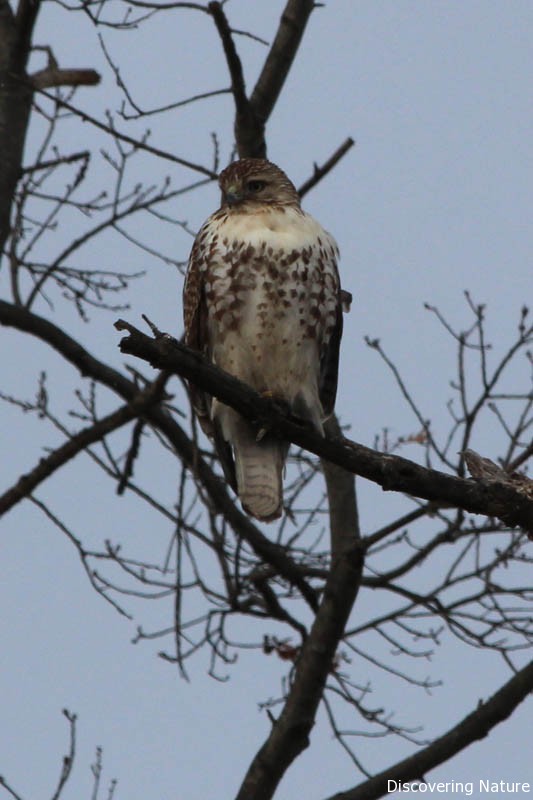 This next one I brightened up with Photoshop. I’m never sure whether I like them better or not when I do that. The contrast is better, but somehow they seem a tad too bright.
This next one I brightened up with Photoshop. I’m never sure whether I like them better or not when I do that. The contrast is better, but somehow they seem a tad too bright.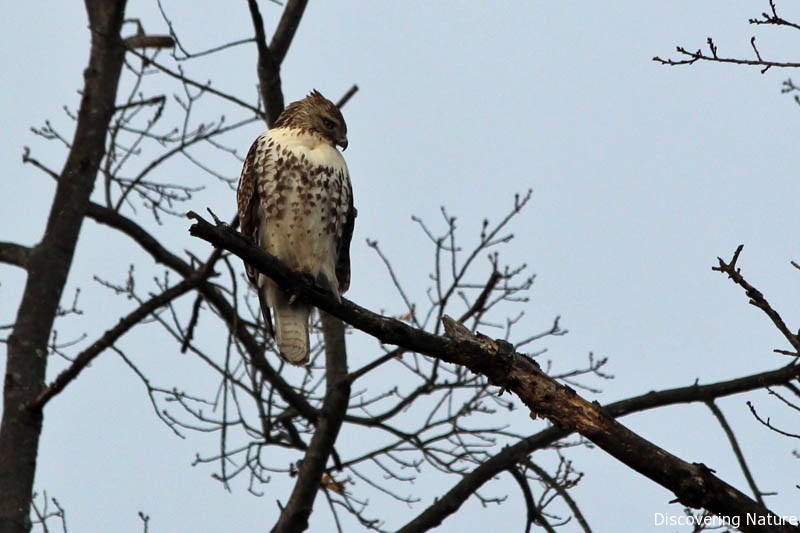 Always fun to sit beside the road with my camera poking out. I’m sure passing drivers think me strange indeed.
Always fun to sit beside the road with my camera poking out. I’m sure passing drivers think me strange indeed.Guilty, as charged.
-
Hawk Take-off #2
It bothers me that none of these (and none of the hawk photos in my previous post) are “tack sharp.” I’m not sure what I’m doing wrong. I wasn’t able to use a tripod in either case, so that’s part of it. But I’m not sure how I might be able to tweak my camera settings to improve the sharpness even without a tripod.
-
Hawk Take-off
-
American Kestrel
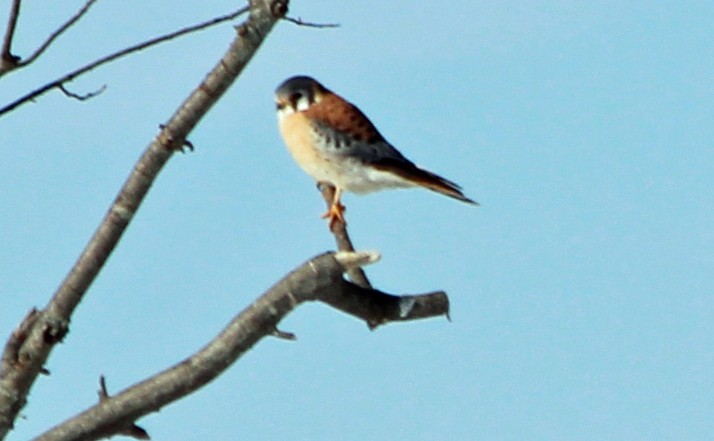 Okay, it’s blurry. But even blurry, it’s more than I’d ever seen a year ago. I didn’t see my first American kestrel till early summer of last year, despite how beautifully bright and detailed their markings are.
Okay, it’s blurry. But even blurry, it’s more than I’d ever seen a year ago. I didn’t see my first American kestrel till early summer of last year, despite how beautifully bright and detailed their markings are.This one was across a field, and I stopped beside a country road to try and get a few pics.
For Christmas, my daughter received a book by master bird carver Floyd Scholz, and among other things Scholz has increased our appreciation for these kestrels. Click on his name and visit his website to see some of his absolutely amazing, lifelike carvings. He has a book about carving and painting an American kestrel which we’ll no doubt invest in at some point if my daughter continues with her interest in carving. For now we content ourselves with the raptor book we now own — an exercise in close observation that inspires nothing short of awe at the grandeur of these magnificent birds.
-
Red-tail art
My daughter came home from our walk yesterday and disappeared into her room to draw the hawk we saw.
She’s 11. I love her drawings — they just get better and better.
